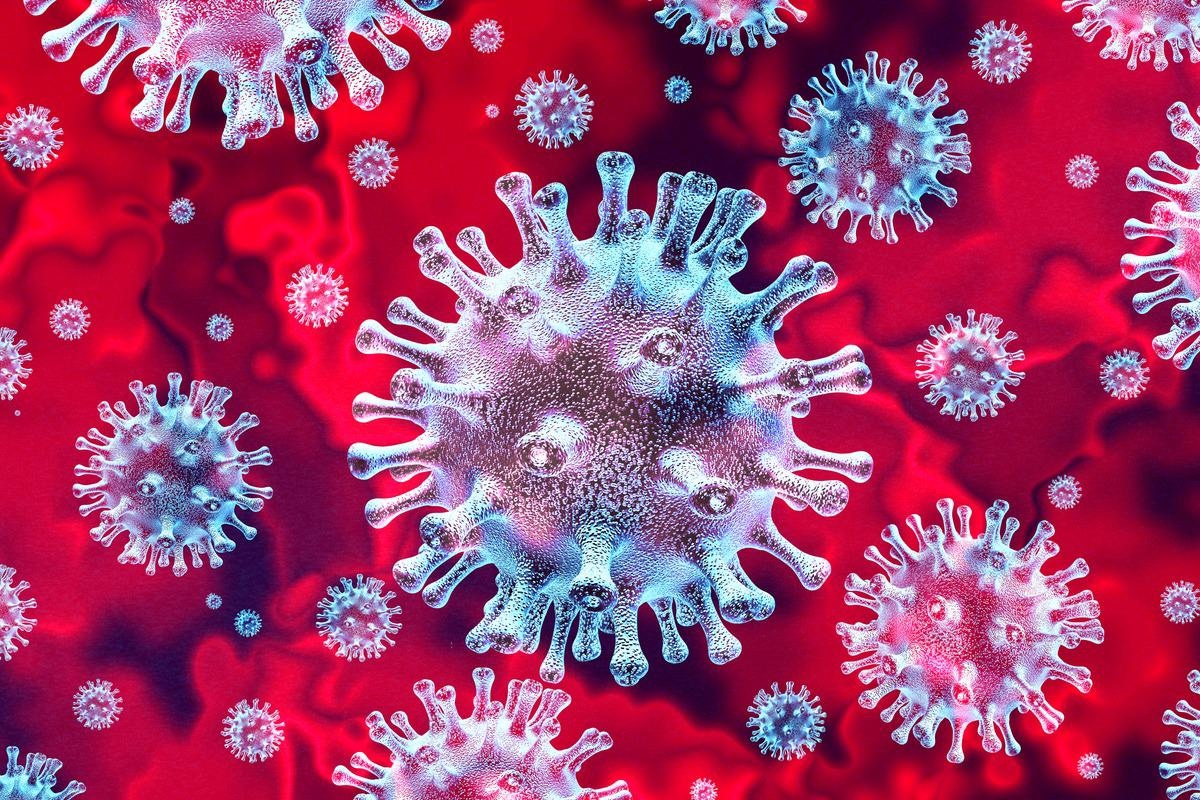The emergence of the coronavirus disease 2019 (COVID-19) pandemic caused by the severe acute respiratory syndrome coronavirus 2 (SARS-CoV-2) highlighted the lack of antivirals against coronaviruses (CoVs).
 Study: A photoactivable natural product with broad antiviral activity against enveloped viruses including highly pathogenic coronaviruses. Image Credit: Lightspring/Shutterstock
Study: A photoactivable natural product with broad antiviral activity against enveloped viruses including highly pathogenic coronaviruses. Image Credit: Lightspring/Shutterstock
SARS-CoV-2 is the third identified CoV against humans causing pneumonia. The first outbreak of SARS-CoV took place in 2003, followed by the outbreak of the Middle-east respiratory syndrome coronavirus (MERS-CoV) in 2012.
The efforts of the scientific community to combat COVID-19 led to the development of highly efficient vaccines that are being administered globally.
However, the emergence of various SARS-CoV-2 variants lowers the vaccine's efficacy and might make booster vaccination a necessity that is not achievable for all humans around the world.
Therefore, to curb the current pandemic and future epidemics along with effective vaccination antivirals, are required.
Background
Before the emergence of the pandemic, no specific drug against CoV was available.
However, in vitro screening of approved drugs has led to identifying some potential antivirals that require testing on patients with COVID-19. Among them, polymerase and protease inhibitors are widely used in in vitro studies.
Coronaviruses enter inside the cell by fusion with the host cell membrane. This fusion depends upon the activity of proteases. The host cell protease TMPRSS2 is important for plasma membrane fusion of SARS-CoV-2 whale cathepsin is important for fusion at the endosomal membranes.
Plants are known to be a natural source of compounds with greater structural diversity than those obtained by chemical synthesis. Many compounds derived from plants have proven their antiviral activity in vitro. Some of these compounds have shown antiviral activity against SARS-CoV-2, but most of them are in silico analyses.
A new study published in Antimicrobial Agents and Chemotherapy showed that pheophorbide a (Pba) isolated from Mallotus oppositifolius (Geiseler) leaf crude extract has antiviral activity against many CoVs, including SARS-CoV-2. The study also demonstrated that Pba, an antiviral photosensitizer, directly acts on the viral particle, impairing the viral-cell fusion step.
About the study
Fifteen plants were collected for the study, which were then powdered and stored in the dark until extraction. Three solvents were used for the extraction procedure, methylene chloride, methanol, and water/thanol. Different viruses were propagated in either Vero-81, Huh-7, or Vero-E6 cells.
After that, cytotoxicity assay, micilair toxicity assays, SARS-CoV-2, HCoV-229E, and MERS-CoV inhibition assays, and time-of addition assay were carried out.
Western blotting was performed for the determination of the SARS-CoV-2 nucleocapsid expression.
Furthermore, the effect of Pba on pseudotyped virion entry was identified along with white light exposure kinetics. This was followed by fusion assay, attachment assay, and quencher assay. Finally, primary airway cell quantification was done along with IC50 and CC50 calculations.
Study findings
The results indicated that Pba exhibited antiviral activity against highly pathogenic coronaviruses at non-toxic concentrations.
Also, Pba did not exhibit cytotoxicity up to 120 micromolar concentrations under dark conditions, while some toxicity was found when exposed to light for a short duration.
The results showed that Pba could inhibit viral entry irrespective of the entry pathway used by the virus.
Moreover, it was observed that no inhibition occurred when Pba was added before the virus inoculation step, while a strong inhibition was observed when Pba was present during the virus inoculation step. However, if Pba was added after inoculation, its inhibitory activity is highly reduced.
Additionally, Pba was found to inhibit entry of the virus at the fusion step but does not prevent attachment of the virus to the cell surface. Since Pba is photoactivatable, it was observed that with the same concentration of Pba, increased inhibitory activity was observed with longer light exposure times. Also, it was found that the antiviral activity of Pba was mediated by the generation of free radicals of oxygen after photoactivation.
Furthermore, Pba was found not to impact virion morphology in a normal medium under light or dark conditions. In the presence of osmotic shock, the morphology of the virion was altered in the dark with Pba, but in light, the morphology was not altered even in the presence of osmotic shock with Pba. Thus, Pba helped to improve membrane rigidity and prevent membrane deformation.
Several other chlorophyll-derived products such as chlorin e6, pyropheophorbide, and a few other structurally related porphyrins to Pba also exhibited antiviral activity against coronaviruses.
Finally, the results of the in vivo studies also indicated that the viral RNA levels and viral titers of both SARS-CoV-2 and MERS-CoV were significantly reduced in the presence of Pba. Also, no toxicity was observed with Pba up to 72 hours in the human primary epithelial airway cells.
Conclusion
The current study indicates that Pba is an effective plant-derived compound having potent antiviral activity against several viruses, including SARS-CoV-2. Pba can therefore be used in the development of antivirals to combat the current pandemic.
Pba also has several advantages; it is a natural product, it does not require a very specific wavelength-dependent illumination, its activity does not depend upon the envelope variants, it is a broad-spectrum antiviral, has low toxicity, and is non-resistant. Pba can, therefore, significantly reduce person-to-person and environment-to-person transmission of SARS-CoV-2.
"activity" - Google News
November 26, 2021 at 09:18PM
https://ift.tt/32uPLxv
Antiviral activity of a photoactivable natural product on coronaviruses - News-Medical.net
"activity" - Google News
https://ift.tt/3ddCXMh
https://ift.tt/2WkO13c
Bagikan Berita Ini














0 Response to "Antiviral activity of a photoactivable natural product on coronaviruses - News-Medical.net"
Post a Comment